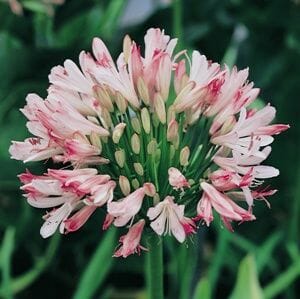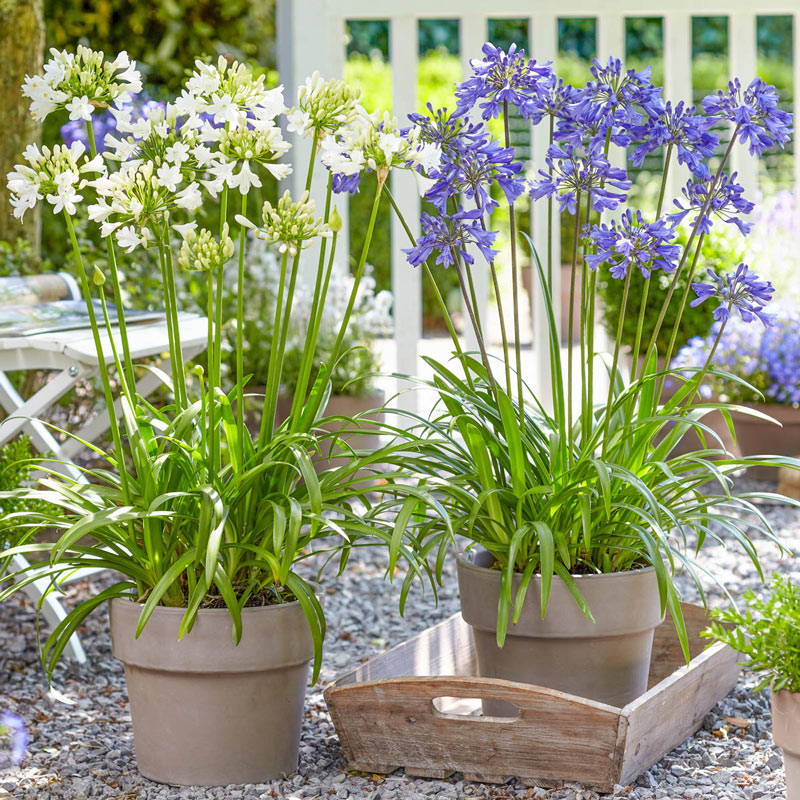Agapanthus Friend Plants: Perfect Pairings for Your Garden
Agapanthus Friend Plants: Perfect Pairings for Your Garden
Blog Article
Unleashing the Secret to Effective Agapanthus Farming: Advice for a Flourishing Yard
In the world of horticulture, cultivating agapanthus efficiently requires a tactical technique that incorporates different facets of plant care. With cautious interest to information, one can open the tricks to supporting these magnificent flowers, resulting in a yard that flourishes with beauty and vibrancy. By recognizing the nuances of agapanthus cultivation, one can develop an atmosphere where these plants thrive and bloom abundantly. In the following conversation, we will check out vital suggestions and methods that will assist you in the direction of a flourishing agapanthus garden, offering insights right into ideal methods, soil conditions, watering methods, and much more.
Planting Agapanthus: Ideal Practices
When growing Agapanthus, appropriate soil prep work is important for ensuring successful development and advancement of these stunning flowers. Agapanthus, typically referred to as Lily of the Nile or African lily, grows in well-draining soil with a somewhat acidic to neutral pH degree - Agapanthus. Before growing, it is important to amend heavy clay soils with natural matter such as compost or peat moss to boost drainage and offer necessary nutrients for the plants
To plant Agapanthus, select an area that obtains full sunshine to partial color, as this will certainly advertise healthy and balanced development and plentiful flowering. Dig an opening two times the size of the plant's root sphere and put the Agapanthus at the exact same deepness it was previously growing. Delicately backfill the hole with soil, pushing down firmly to eliminate any air pockets around the roots.
Water the recently planted Agapanthus extensively and continue to maintain the soil uniformly wet, especially throughout the plant's active growing period. Agapanthus. Using a balanced fertilizer once a month can additionally sustain the plant's development and blooming. By following these finest techniques for growing Agapanthus, you can create a sensational display of these fascinating flowers in your yard
Perfect Dirt Issues for Agapanthus
For optimum development and flowering success of Agapanthus plants, making sure the soil problems are excellent is critical. Agapanthus likes soil that is abundant in nutrients, so integrating a balanced plant food during the expanding season can advertise healthy development and lively blooms.

Watering and Fertilizing Tips
To make sure healthy and balanced development and lively flowers, appropriate watering blog and fertilizing methods are necessary for successful Agapanthus farming. Agapanthus plants profit from normal watering, particularly during the growing season.
When it involves feeding Agapanthus, a balanced fertilizer with equivalent parts nitrogen, phosphorus, and potassium can be applied in the springtime to advertise healthy and balanced development and flowering. Slow-release fertilizers are ideal for giving nutrients gradually over an extensive period. Avoid over-fertilizing, as this can bring about too much foliage growth at the expenditure of flowers.
Additionally, incorporating organic issue like garden compost into the dirt can improve nutrient levels and boost soil framework, helping in the overall wellness of the Agapanthus useful site plants. By complying with these watering and fertilizing tips, gardeners can guarantee their Agapanthus plants prosper and produce magnificent screens of flowers.
Trimming and Deadheading Techniques
Correct pruning and deadheading methods play an essential role in preserving the wellness and aesthetics of Agapanthus plants, matching the crucial methods of watering and feeding for successful growing. Trimming Agapanthus entails removing spent blossom heads, yellowing or dead fallen leaves, and general shaping of the plant to advertise much better growth. Deadheading, the process of getting rid of faded flowers, not just improves the plant's look yet likewise motivates additional blooming.
When deadheading Agapanthus, it is a good idea to trim off the blossom stem at the base making use of sharp, tidy shears. This process redirects the plant's energy from seed manufacturing back right into origin and foliage growth, advertising a much healthier and more robust plant. Regular deadheading can prolong the flowering duration of Agapanthus and stop self-seeding, which can bring about overcrowding.
In regards to pruning, Agapanthus generally take advantage of a light trim after blossoming to tidy up the plant and motivate fresh development. Reducing back the invested blossom stems and eliminating any damaged or dead foliage helps preserve the plant's vitality and general look. However, it is important to stay clear of reducing right into the crown of the plant, as this can compromise its health and wellness.

Protecting Agapanthus From Vermins and Diseases
Applying efficient bug and illness management approaches is critical to securing the health and wellness and vigor of Agapanthus plants in growing. Agapanthus are usually hardy plants, yet they can still come down with various parasites and illness if not appropriately taken care of. One common bug that impacts Agapanthus is the Agapanthus borer, a caterpillar that tunnels into the plant, creating damage to the leaves and blossoms. To prevent problems, routine inspection of the plants is crucial. If borers are found, they can be manually gotten rid of, or insecticidal soap can my site be utilized as a control measure.
In addition to parasites, Agapanthus are prone to conditions such as root rot and fungal leaf places. By remaining vigilant and dealing with parasite and disease problems quickly, garden enthusiasts can aid their Agapanthus prosper and thrive.

Final Thought
In conclusion, successful farming of agapanthus requires correct growing strategies, ideal soil problems, adequate watering and feeding, regular trimming and deadheading, and defense from pests and diseases. By complying with these ideas and techniques, gardeners can ensure a prospering yard loaded with lovely agapanthus blossoms. Agapanthus. Bear in mind to maintain consistent care and focus to detail to advertise the wellness and durability of these spectacular plants
When planting Agapanthus, correct dirt preparation is important for making certain effective development and development of these lovely flowers.Water the newly grown Agapanthus completely and proceed to maintain the dirt evenly wet, especially throughout the plant's active growing period.For optimal development and flowering success of Agapanthus plants, guaranteeing the soil conditions are ideal is important. When growing or hair transplanting Agapanthus, ensure the soil is well-prepared to offer the essential foundation for the plants to establish themselves efficiently. One usual insect that impacts Agapanthus is the Agapanthus borer, a caterpillar that tunnels right into the plant, causing damage to the leaves and blossoms.
Report this page